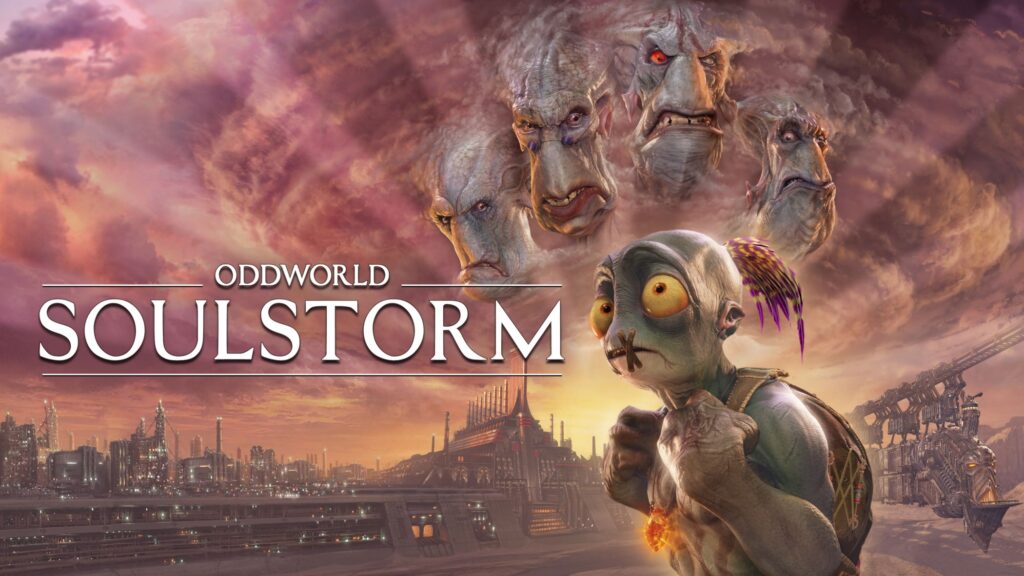
After Stranger’s Wrath, the Oddoworld series went into dormancy until New and Tasty; a remake of the original PlayStation game that was released in 2014. Since then there has been an effort to revive the franchise with HD remasters of the 3D games. Oddworld Inhabitants’s next game would not only be a remake of Abe’s Exodus, but would be a vast expansion of the original concept.
Changes to remakes are nothing new to video games. Sometimes changes can improve upon what is already there with a discerning game director at the helm. The Resident Evil remake took a schlocky survival-horror, and transformed it into what is widely considered one of the scariest video games ever made. What matters is if the designers maintain the foundation and experience and build upon it.
Some remakes make huge and broad changes that are nothing like the original. Final Fantasy VII Remake is so far removed from its source material that it offers a totally different experience. Why remake a game if the foundation will be utterly rejected? Does Oddworld: Soulstorm improve upon Abe’s Exodus, or is it another remake that betrays what made it so beloved in the first place?
Oddworld: Soulstorm
Developer: Oddworld Inhabitants
Publisher: Oddworld Inhabitants, Microïds
Platforms: Windows PC, PlayStation 4, PlayStation 5 (reviewed), Xbox One, Xbox Series X|S
Release Date: April 6, 2021
Players: 1
Price: $49.99 USD

When Oddworld: Soulstorm begins, veterans of Abe’s Exodus will be confused and bewildered. This is a remake that takes a lot of liberties, and makes drastic changes across the entire game. The tone is has gone from weird and slightly comedic with elements of dark humor and surrealism, to becoming a very self-serious and melodramatic.
Many of the memorable and iconic scenes from Abe’s Exodus are gone, and are replaced with completely new ideas and a different script entirely. This was biblical in its scope; and the epic journey to rest the souls of the dead Mudokons and to free the rest of his kin is by possessing the Glukkon CEOs to manipulate them into doing Abe’s bidding.
Soulstorm story’s broad strokes are the same as it was in Abe’s Exodus. Some changes are understandable; like the addition of more emotional scenes, and the improved craft in directing for action sequences. However, there are also lots of inferior choices, and it mostly has to do with tone and how it also corrodes the gameplay experience.
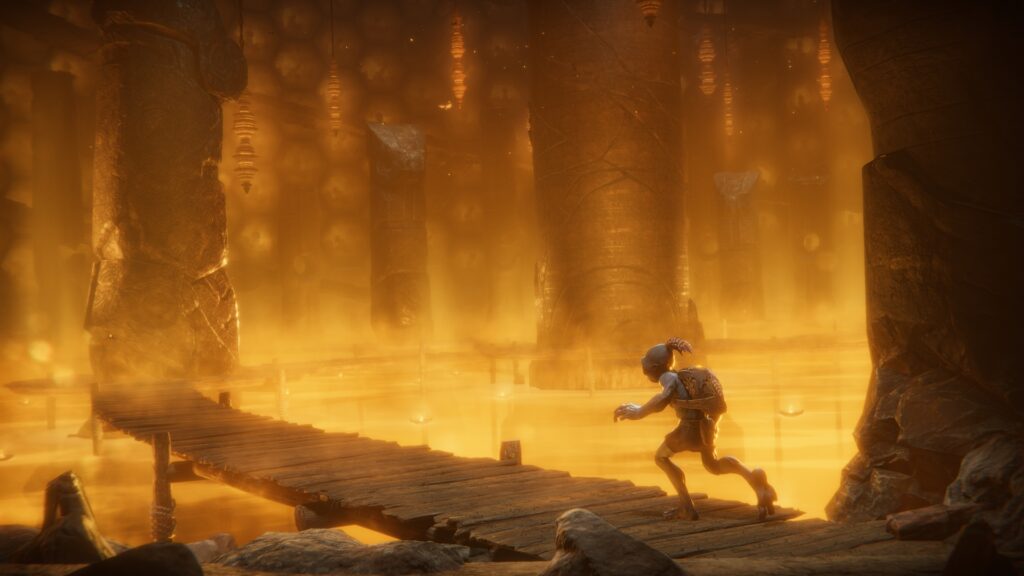
Abe’s Exodus was a “cinematic” step-based platformer. This meant that controlling Abe was a very deliberate experience, and his overly drawn out and fluid animation gave him a palpable sense of weight. Every action the player took would demand some commitment, and this made playing the game fairly tense as Abe would die in one hit.
Soulstorm is not a cinematic step-based platformer. Sadly, this style of game is even more dead than traditional 90s era survival-horror, and modern audiences today would likely not accept a methodical platformer. Abe now moves very fast, and is as lithe as a ninja. He can even double-jump, take several bullets to the back, and wall-jump like Ryu Hayabusa.
Having Abe play like this in a scenario with the tone of Shindler’s List is only slightly dissonant. The real emotional disconnect happens with all the ridiculous and pointless collectibles Abe can gather, and craft explosives or dangerous potions to burn and maim Sligs.
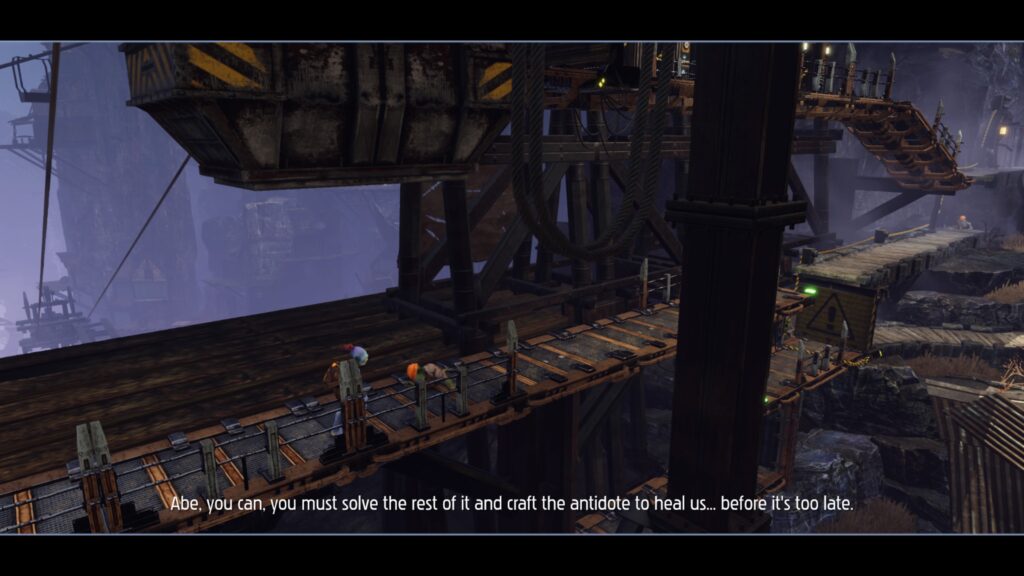
Soulstorm losing the dark comedy angle from the source material hurts the scenario. It becomes really hard to take some of the extremely emotional and tense scenes seriously; after playing a really long level where Abe gets caught up in comical shenanigans involving a small army of one liner spewing Mudokons.
Further damaging the tone is the exhausting pacing. The levels in Soulstorm can take a long time to beat, and they go on for what feels like an eternity. It’s enough to distract and break immersion. Several times there will be moments that feel like a fitting end to a stage… Only for it to go on for another 10 to 20 minutes, with a much more demanding challenge.
The flow of every stage varies. Sometimes Abe will have to make his way stealthily past hordes of patrolling Sligs. Other times there will be many Mudokons who need help, or there will be some environmental puzzles that need solved. It’s a wonderfully delicious mixed bag of satisfying gameplay scenarios. The only issue is these scenarios overstay their welcome.
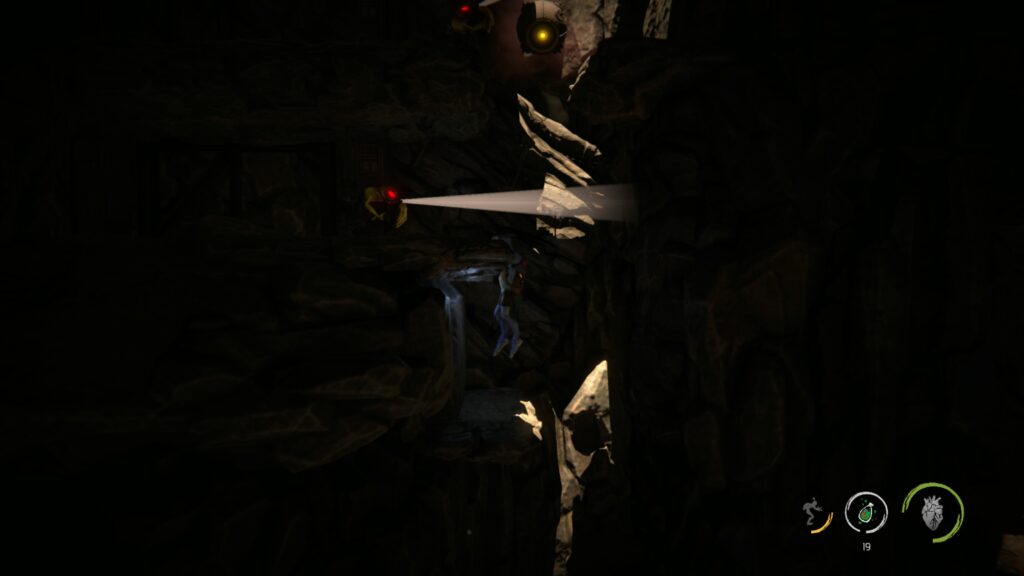
Like in the original game, Abe will be saving Mudokons; but like everything else in Soulstorm, the devs felt the need to grossly expand it. There are more than 1,400 Mudokons to save, and many are fodder to be sacrificed since it does not seem possible to save them all the first time playing.
The stealth sequences are some of the more puzzling parts of the game. Slig AI does not always make sense, and their hearing is inconsistent. These parts are tolerable in smaller doses, but what is completely indigestible is the blaring alert music which is way too loud, and can barely be best described as angry industrial noise.
Alerting roaming Sligs to mess with them could’ve been a lot of fun, but the headache inducing music when getting caught is much too overbearing and obnoxious. Past Oddworld games relied more on ambient music, but this one sticks out by trying to be as epic and cinematic as possible.
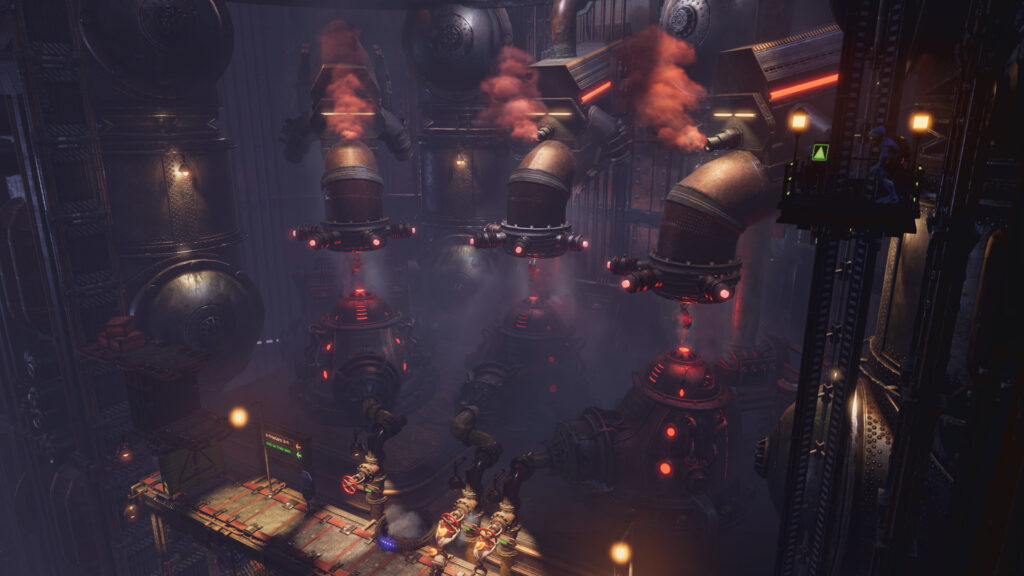
If there is one thing Soulstorm does not blunder, it’s its visuals. The boys at Oddworld Inhabitants have made an extremely impressive looking game that often resembles a CGI movie. The vast range of expression and facial detail on every crease and skin folds on the faces and anatomy of the weird monsters of Oddworld have never been more realized than as they appear in Soulstorm.
Great care was put into the lighting to set the mood, and how the filthy and rusty metallic surfaces reflect the glow of flames or a pulsing siren. On PlayStation 5, visuals are pushed to their fullest and the level of detail is not compromised. The frame rate is also perfectly stable at 60 and load times are very fast, making the presentation feel very polished.
At launch this was not the case, since Soulstorm was rife with bugs and glitches that hampered the experience. Since then, Oddworld Inhabitants have improved the playing experience, and fixed most of the issues. It’s not perfect, as some oddities can occur. Generally, this game is rock solid in its current state.
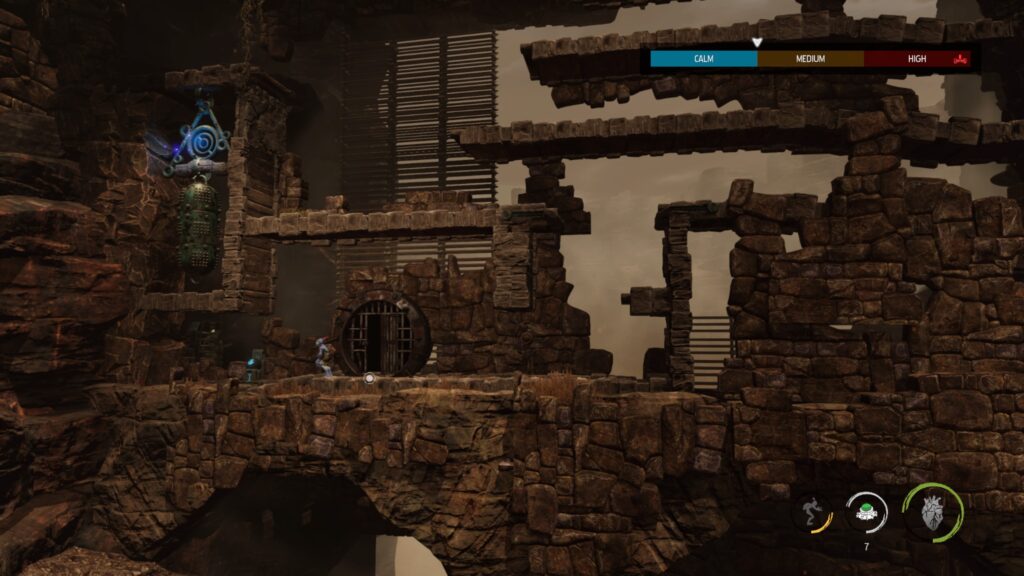
What was originally depicted as single screen pre-rendered backgrounds are now fully 3D. Impressively, the level design takes on a new life with how stages are able to wrap around each other, to fully take advantage of the added depth. The sweeping vistas of the alien Oddworld landscape has never looked so believable.
Every setting looks immaculately crafted, boasting all the tricks that the Unity engine can muster. This used to be the cheap option game engine for hobbyists, but now it has been updated so immensely it can render imagery that is on par with AAA Unreal Engine 4 titles.
The huge scope of the settings is not just for show; Abe will often be able to find a way to interact or explore some distant areas. Many secrets and puzzles will require thorough investigating to make progress. Being floored by awe-inspiring scenery goes a long way in fostering an adventurous spirit.

Returning to the change in tone in Soulstorm, it’s perfectly exemplified in its start screen. When Abe’s Exodus boots up, the start screen has Abe pop his head out and greet the player, and gamers are free to mess with his speaking commands, allowing Abe to fart on cue. It was an endearing yet cute bit of flair that drew players in.
Soulstorm start screen has Abe with a thousand-yard stare, barely moving and awkwardly gawking. There is no more speech testing, because that would hurt the harrowing mood now, and farting has been cut altogether. The playfulness of the original game has been completely gutted and if Oddworld Inhabitants wanted so badly to tell such a different take on the story; why bother remaking Abe’s Exodus at all?
This change in priorities is felt through out the entirety of the game. While Oddworld: Soulstorm is no means a bad game, it’s a profoundly misguided one that fails to capture what made its progenitor so wonderful. For a remake to make such a drastic change to the original, Oddworld Inhabitants missed the opportunity to include the original Abe’s Exodus as a bonus unlockable feature.
Oddworld: Soulstorm was reviewed on PlayStation 5 using a review code provided by Oddworld Inhabitants. You can find additional information about Niche Gamer’s review/ethics policy here.